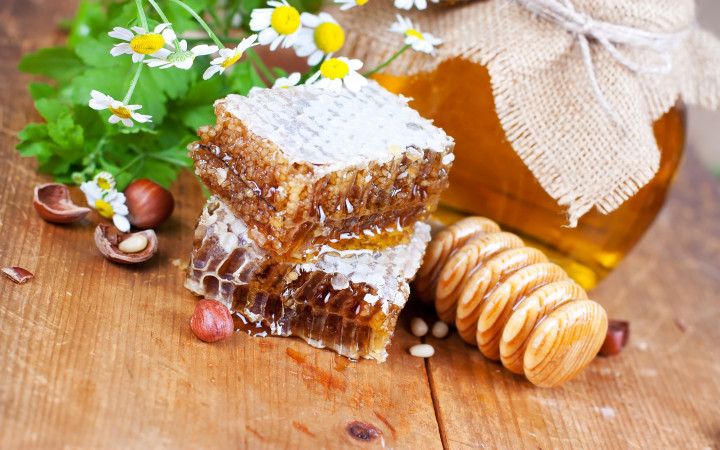Today’s Wonder of the Day was inspired by Bjorn. Bjorn Wonders, “What is the Step by Step process of Harvesting Honey?” Thanks for WONDERing with us, Bjorn!
They buzz. They pollinate. They crown a queen. Sometimes they sting! Yes, bees are some of the most interesting little creatures around. And, perhaps best of all, they make the sweet, delicious substance called honey.
Have you ever spread honey on toast? Maybe you mix it into a cup of tea or put it in your cereal. Most people agree that it’s a great addition to many foods. And it’s all thanks to honeybees! Have you ever WONDERed just how beekeepers harvest honey from a beehive?
It turns out, honey harvesting is quite the process. Like most things beekeepers do, safety is very important. Have you ever been stung by a bee? If so, you know it hurts. And, of course, some people are allergic to bees—stings can have dangerous consequences for them.
If you’re allergic to bees, we definitely don’t recommend becoming a beekeeper. But even if you’re not, you should always be careful around a beehive. That’s why beekeepers wear special protective gear when doing anything near a hive.
Before harvesting honey, beekeepers put on long elbow-length gloves. They also wear a special hat with a veil that covers their face. Many wear overalls that are specially made to prevent bee stings. After suiting up, they’re ready to approach the hive.
Even when covered head-to-toe in protective clothing, beekeepers do their best to avoid direct contact with bees while harvesting honey. This is safest for both the beekeeper and the bees themselves. Some people use a smoker to blow smoke around the entrance of the hive. This causes bees to move to the bottom of the hive, away from the honey. Others use a fume board that will drive the bees away with its smell.
Inside each beehive, there are wooden frames that hold the honeycombs. When bees make honey, they store it in these honeycombs. When a frame is full, they seal it with wax. To harvest honey, beekeepers pull a frame from the hive and use a hot knife to cut away the wax. Many keep the wax to make candles.
The next step in the process involves a honey extractor. This is a device that takes the liquid honey out of a honeycomb without destroying the frame. That way, the frame can be put back into the hive and used again. Once the honey sits for a few days, it’s ready to bottle and eat.
When harvesting honey, it’s important to only take the extra honeycombs the bees don’t need. That’s especially true when beekeepers harvest during fall. Bees need honey to survive over the winter. If you take too much, the hive may not make it.
However, responsible harvesting doesn’t harm bees. Beekeepers work hard to protect their hives and do their best not to remove too much honey. If you’re thinking of keeping bees, spend plenty of time learning about how to care for a hive. It’s best to get advice from an expert before you start.
After all, bees play an important part in our ecosystem. It’s important for people to do what they can to help them. That’s especially true for beekeepers who take responsibility for their care. Do you dream of harvesting fresh honey from your own backyard one day? Many think it’s a fun and very rewarding hobby!
Standards: CCRA.L.3, CCRA.L.6, CCRA.R.1, CCRA.R.2, CCRA.R.3, CCRA.R.4, CCRA.R.10, CCRA.SL.1, CCRA.SL.2, CCRA.W.2, CCRA.W.9, CCRA.L.1, CCRA.L.2, NCAS.A.1, NCAS.A.2, NCAS.A.3




